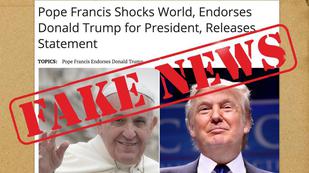The Dangerous Path from Fake News
Summary
ModifyReferencing the 2016 US election and the role social media and fake news has played in the result, something must be done to separate the genuine news from the distribution of fake information.
Wiki article
Compare versions Edit![]()
by Hubertus Hofkirchner -- Vienna, 21 Dec 2016
The right answer to the fake news crisis cannot be more regulation or government censorship. We need new technology for social fact checking and better tools for public debate.

Media panic
Legacy news media houses are starting to panic. Not only are newspaper audiences and revenues plunging, now their influence on the public opinion is evaporating to boot.
The 2016 U.S. presidential elections and Donald Trump’s surprise victory sparked a dangerous narrative to make up for lost ground: the electorate may have gotten it all wrong, led astray by fake news propagated by legacy media’s nemesis, social media.
Some observers were quick to ask if this is the pot calling the kettle black. First, there are less than neutral government news media all over the world. Second, there are the endearingly named “press ducks”, fakes if mostly harmless in the big scheme of things.
Third, even the free press has a dark history of printing fakes without due checking. For example, big news about Saddam Hussein’s weapons of mass destruction in Iraq, or Slobodan Milosevic’s alleged genocide in Kosovo were propagated by legacy news media as being beyond doubt until their fake nature was unmasked many years later by a neutral commission and a United Nations court.
Changed Game
The 2016 U.S. presidential elections, the 2016 Brexit referendum, and the Arab Spring before that show how the public relations game is changing. “The Brexit campaign would have failed before the advent of social media”, is a belief held by the majority of “remainers”. Immediately after Donald Trump’s victory, newspapers blamed social media for aiding the real-estate mogul’s campaign. Their embitterment may have been exacerbated by Trump’s outright contempt for the legacy news media. In the light of their own failures, newspapers’ whining about fake news rings self-serving.
What is clear is that the world has moved on. Facebook, Twitter & Co are now the primary delivery channels of news headlines. Tellingly, Millennials prefers their political news served as comedy formats like the Colbert Report and the Daily Show.
The Road to Oppression
The Chinese and North Korean governments, amongst others, have recognised this “danger” and banned access to the free social networks like Facebook and Twitter. And if there are any (domestic) North Korean political comedy shows, please point me towards them. (PS: Tweet it, so Kim Jong-un doesn't find out.)
It is absolutely chilling that some pundits and politicians in the U.S. and in the European Union now propose to follow these doubtful role models. This would be tantamount to the proverbial throwing out of the baby with the bath water. Germany openly plans something reminiscent of Minitrue, the "Ministry of Truth" of George Orwell's dystopian prediction "1984".
Already, social commenting is being turned off by more and more news media sites at an alarming rate, the cost of moderation is cited as an important reason for this trend, as is the allegedly better suitability of social media for commenting news. “We see really robust and thoughtful conversations on our Facebook page”, said Ben Frumin of The Week in a NiemanLab interview. Ironically, it is precisely this very capitulation to social media which had the unintended consequence to shift the power of public consensus making to, well … the public.
In the interest of democracy and a free open society, uncensored speech is of utmost importance. It would be fatal to give in to political knee-jerk calls for regulation or censorship in the echo chamber of legacy media’s short-term interest. Empowering the few to dictate the many what speech is right or wrong is a milestone into a very dark future.
The Solution
It is self-evident that the method for fact checking must change. When the legacy transport industry moved on from the horse cart to motor vehicles, we could not continue to bring our automobiles to a vet for a check up. In the same vein, social media now requires us to move on to a model of social fact checking. This technology is not science fiction, it already exists and is available for free right at our fingertips.
In 2015, scientists from Harvard University embarked on a project of fact-checking journals of psychology where even reputed publications have such an embarrassingly high degree of fake studies that some call it a veritable replication crisis. Harvard used a prediction market where scientists traded the likelihood of an article being replicable or not, i.e. Once the prediction market’s trading mechanism came into play, it vastly outperformed with 71% correct results compared to the legacy peer-review mechanism with only a 39% success rate. The proportion of fakes in marketing journals is even higher. Replication studies by the Wharton School contradicted the original article in 60% of the cases, unmasking the vast majority of published marketing science as a fake.
In the same fashion, we should employ modern prediction markets to perform checks on key claims in news reports in legacy and social media alike. Second generation platforms run for free on reputational virtual money for maximum inclusivity of the broad public, and are not to be mixed up with gambling sites or betting exchanges catering to a small minority who like to be “entertained” by losing cash.
The new services are the social tool of choice to determine with high accuracy what’s fact and what’s fake. Let us hope that politicians recognise and endorse this enlightened route and avert the one to oppression.
Versions
